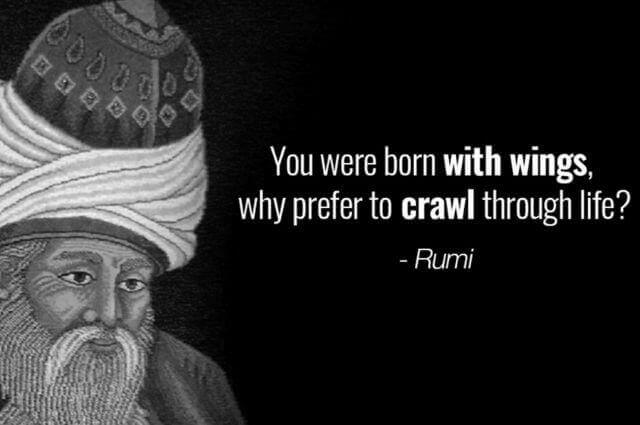Yoga
Unveiling the Power of Self-Awareness through Meditation and Yoga

In the fast-paced world we inhabit, the pursuit of self-awareness and inner growth has become paramount. This unique research article delves into the intersection of science, technology, and ancient wisdom to explore the transformative potential of meditation and yoga in cultivating self-awareness.
With a blend of scientific evidence, futuristic insights, and motivational inspiration, this article aims to captivate and enlighten readers from all walks of life.
Understanding Self-Awareness:
In the quest for personal growth and fulfillment, the concept of self-awareness stands as a guiding light. This section delves into the depths of self-awareness, exploring its scientific underpinnings and illuminating its profound impact on our lives.
By understanding the intricate mechanisms behind self-awareness, we can unlock its transformative potential and embark on a journey of self-discovery.
The Psychology of Self-Awareness:
Self-awareness is a multidimensional construct that encompasses various cognitive, emotional, and introspective aspects. It involves the ability to reflect upon oneself, recognize one’s thoughts, emotions, and behaviors, and possess an accurate perception of one’s strengths and weaknesses.
This cognitive self-awareness allows us to develop a deeper understanding of our inner world and how we relate to the external environment.
Within the realm of self-awareness, self-reflection plays a vital role. By engaging in self-reflection practices such as journaling, introspection, and self-inquiry, we can delve into the layers of our thoughts, beliefs, and values.
Through introspection, we gain insights into our motivations, desires, and fears, fostering a deeper connection with our authentic selves.
Self-awareness extends beyond the individual self, transcending notions of separation. It intertwines with concepts like mindfulness and non-duality, inviting us to explore the interconnectedness of all things and question the illusion of a separate self.
By embracing a broader perspective, we can cultivate a more holistic understanding of self-awareness and its implications for personal growth and well-being.
The Neuroscience of Self-Awareness:
Advances in neuroscience have shed light on the neural underpinnings of self-awareness. Research has revealed that self-awareness involves intricate brain networks, including the prefrontal cortex and the default mode network.
These regions are involved in self-referential processing, introspection, and the integration of self-related information.
Self-awareness also undergoes developmental trajectories throughout life. In early childhood, self-awareness gradually emerges as children develop a sense of self-identity and self-recognition.
Over time, social interactions, cultural influences, and personal experiences shape the formation of one’s self-concept and self-esteem.
Self-awareness is not confined to conventional states of consciousness. Altered states of consciousness, such as flow states, meditation-induced states, and psychedelic experiences, can lead to profound shifts in self-awareness.
These states often involve a dissolution of ego boundaries, expanding our sense of self and fostering a greater connection with the world around us.
The Power of Emotional Intelligence:
Emotional intelligence, closely intertwined with self-awareness, plays a pivotal role in our well-being and interpersonal relationships. Emotional self-awareness involves the ability to recognize and understand our own emotions.
By developing emotional self-awareness, we gain insight into our emotional triggers, patterns, and needs, which allows for more effective emotional regulation.
Self-awareness contributes to empathy and social awareness. When we possess a deep understanding of our own emotions, thoughts, and experiences, we become better equipped to empathize with others and recognize their emotional states.
This empathic awareness fosters meaningful connections, enhances communication, and promotes harmonious relationships.
Cultivating emotional intelligence and self-awareness involves intentional practices. Mindfulness-based techniques, such as meditation and self-compassion exercises, can help individuals develop a heightened sense of emotional self-awareness.
Active listening and perspective-taking exercises can also enhance empathy and social awareness, allowing for more compassionate interactions.
Self-awareness, with its psychological, neurological, and emotional dimensions, serves as a gateway to personal growth, authentic living, and meaningful connections with ourselves and others.
By comprehending the intricate interplay between our thoughts, emotions, and self-perception, we embark on a profound journey of self-discovery and self-empowerment. As we continue to unravel the mysteries of self-awareness, we unlock the potential to cultivate a more conscious and fulfilling existence.
The Ancient Wisdom of Meditation and Yoga:
The ancient wisdom of yoga’s are various. Few are entitled below:
The Path to Inner Stillness:
Meditation has been practiced for thousands of years as a means to cultivate mindfulness, expand consciousness, and foster a deeper connection with the self. At its essence, meditation is a practice of quieting the mind, allowing us to observe our thoughts, emotions, and sensations without judgment or attachment.
By immersing ourselves in the present moment through meditation, we cultivate a heightened sense of awareness and develop the ability to observe the fluctuations of our mind. This practice of mindfulness enables us to disentangle ourselves from the constant stream of thoughts and cultivate a sense of inner stillness.
Through regular meditation practice, we gain insights into the patterns of our thoughts, emotions, and behaviors. We become more attuned to our inner landscape and develop a greater understanding of ourselves. This self-awareness allows us to navigate our lives with greater clarity, authenticity, and purpose.
Harnessing the Power of asana’s:
Yoga, an ancient practice originating from India, combines physical postures, known as asana’s, with breath control and meditation. While asana’s are commonly associated with physical fitness, their transformative potential extends far beyond the realm of physical well-being.
The practice of yoga postures promotes the integration of body, mind, and spirit. As we move through various asana’s, we cultivate a heightened sense of bodily awareness, aligning our movements with our breath and developing a deep connection with our physical selves.
The impact of yoga on mental well-being is profound. Through the practice of asana’s, we stimulate the parasympathetic nervous system, inducing a relaxation response that counteracts the effects of stress. This promotes a sense of calmness, clarity, and emotional balance.
Asana’s promote self-awareness by bringing attention to the present moment. Each posture invites us to observe our body’s sensations, our breath, and our thoughts. By cultivating this focused awareness, we develop a greater understanding of our physical and mental states, enhancing our overall self-awareness.
The combination of physical movement, breath awareness, and mindfulness in yoga asana’s allows for a holistic approach to self-awareness and well-being. As we engage in the practice, we embark on a transformative journey of self-discovery, self-acceptance, and self-transformation.
The ancient wisdom of meditation and yoga provides powerful tools for cultivating self-awareness and inner growth. Through meditation, we embark on a path of mindfulness, embracing the present moment and developing a deeper connection with ourselves.
In the practice of yoga asana’s, we harmonize our physical, mental, and spiritual aspects, fostering self-awareness through bodily awareness, breath control, and focused attention.
The Scientific Lens on Meditation and Yoga:
The major components of scientific part in meditation yoga are as follows.
Neuroscience of Meditation:
In recent years, neuro-scientific research has provided compelling evidence for the positive effects of meditation on brain structure and function. Through advanced imaging techniques such as functional magnetic resonance imaging (fMRI) and electroencephalography (EEG), researchers have gained insights into the neural mechanisms underlying the transformative power of meditation.
Studies have shown that regular meditation practice can lead to structural changes in the brain, particularly in areas associated with attention, emotional regulation, and self-awareness. The prefrontal cortex, responsible for executive functions, exhibits increased activation and connectivity, leading to enhanced cognitive control and focus.
Meditation has been found to induce changes in the amygdala, a key region involved in emotional processing. Through meditation, individuals may experience reduced activation of the amygdala, leading to improved emotional regulation and stress resilience. These neuroplastic changes contribute to the cultivation of emotional well-being and greater self-awareness.
Research suggests that meditation practices, such as mindfulness meditation, promote changes in the default mode network (DMN), a network involved in mind-wandering and self-referential thoughts. Through meditation, individuals may experience a quieting of the DMN, reducing rumination and increasing present-moment awareness.
Physiological Benefits of Yoga:
Yoga, as a holistic practice, not only nurtures the mind but also bestows a multitude of physiological benefits. Through the integration of physical postures, controlled breathing, and relaxation techniques, yoga engages both the body and mind, leading to remarkable physiological changes.
Regular practice of yoga has been linked to improved cardiovascular health. The combination of gentle movement, deep breathing, and relaxation helps lower blood pressure, reduce heart rate, and enhance overall cardiovascular function. These benefits contribute to the prevention and management of cardiovascular conditions.
Yoga enhances flexibility, strength, and balance. The practice involves a wide range of postures that gently stretch and strengthen the muscles, ligaments, and joints. Increased flexibility not only promotes better physical performance but also aids in injury prevention and promotes overall joint health.
Yoga promotes body-mind integration. By bringing attention to the body, breath, and sensations during practice, individuals develop a heightened sense of bodily awareness. This mind-body connection fosters a greater understanding and appreciation of one’s physical and mental states, leading to improved overall well-being.
Beyond the physical realm, yoga has been shown to positively influence the autonomic nervous system, resulting in a reduction in stress and anxiety. The deep breathing and relaxation techniques employed in yoga stimulate the parasympathetic nervous system, inducing a state of relaxation and promoting emotional balance.
The scientific exploration of meditation and yoga offers profound insights into their effects on the brain, body, and overall well-being. Neuroscientific research highlights the structural and functional changes that occur in the brain through meditation, leading to enhanced focus, emotional regulation, and self-awareness.
The practice of yoga provides numerous physiological benefits, including improved cardiovascular health, increased flexibility, and enhanced body-mind integration. These physiological changes contribute to overall physical well-being and promote a sense of balance and harmony.
By embracing the scientific lens on meditation and yoga, we gain a deeper appreciation for their transformative potential. The synergy between ancient wisdom and scientific research allows us to understand and harness the power of these practices in cultivating self-awareness, promoting holistic well-being, and nurturing a profound connection between the mind, body, and spirit.
Technological Advancements and Future Possibilities:
Mindfulness in the Digital Age: In the era of rapid technological advancement, emerging technologies and mobile applications have paved the way for the integration of meditation and mindfulness practices into our daily lives.
These digital tools have revolutionized accessibility and provided new avenues for individuals to engage with mindfulness practices, promoting greater well-being and self-awareness.
Mobile applications and online platforms dedicated to meditation and mindfulness have gained popularity, offering guided meditations, breathing exercises, and personalized mindfulness programs.
These applications provide convenience and flexibility, allowing individuals to engage in mindfulness practices anytime, anywhere. They offer a wide range of resources, from beginner-friendly content to specialized programs for specific needs, such as stress reduction, sleep improvement, or emotional well-being.
Wearable devices have emerged as powerful tools for promoting mindfulness. From smartwatches to biofeedback devices, wearables offer real-time monitoring of physiological signals, such as heart rate and skin conductance.
These devices provide individuals with immediate feedback on their stress levels, helping them become more aware of their body’s responses and encouraging relaxation and self-regulation techniques.
Virtual reality (VR) technology has also shown promise in enhancing mindfulness experiences. By creating immersive and interactive environments, VR can transport individuals to tranquil settings, allowing them to engage in guided meditations or yoga sessions in a visually captivating and engaging manner. VR technology holds the potential to deepen the sense of presence and embodiment during mindfulness practices, amplifying the mind-body connection.
Augmented Yoga:
Augmented reality (AR) and wearable devices offer exciting possibilities for enhancing the practice of yoga and deepening the mind-body connection. Through the integration of technology, yoga practitioners can access personalized guidance, real-time feedback, and immersive experiences, enriching their practice and promoting self-awareness.
AR applications can overlay visual cues and alignment guides onto the user’s surroundings, assisting individuals in attaining correct postures and alignments during yoga practice. By providing real-time feedback on body positioning and movement, AR enhances the practitioner’s self-awareness and promotes proper alignment, reducing the risk of injury and maximizing the benefits of each posture.
Wearable devices, such as smart clothing or yoga-specific sensors, can capture and analyze data related to body movements, balance, and breath. This information can be used to provide personalized insights and recommendations, helping practitioners refine their practice and deepen their understanding of their own physical and energetic states.
By integrating these wearable technologies into yoga practice, individuals can fine-tune their movements, optimize their alignment, and cultivate a more refined sense of body awareness.
The integration of biofeedback devices with yoga practice allows individuals to monitor and regulate physiological signals, such as heart rate variability and skin conductance. This feedback enables practitioners to explore the impact of their thoughts, emotions, and breath on their physiological state, fostering a deeper understanding of the mind-body connection and facilitating self-regulation.
Technological advancements offer exciting possibilities for the integration of meditation and yoga practices into our modern lives. Mobile applications, wearable devices, virtual reality, and augmented reality technologies have expanded accessibility, personalized guidance, and immersive experiences.
By embracing mindfulness in the digital age, individuals can incorporate meditation and mindfulness practices into their daily routines, promoting greater self-awareness, emotional well-being, and stress reduction.
Augmented yoga, through the integration of technology, enhances the practitioner’s experience, providing real-time feedback, personalized guidance, and refined body awareness.
As technology continues to evolve, the synergy between ancient wisdom and innovative tools opens up new horizons for deepening the mind-body connection, unlocking human potential, and promoting holistic well-being in the digital era.
By embracing these technological advancements mindfully, we can harmonize ancient wisdom and modern innovation, cultivating self-awareness and fostering a profound connection with ourselves and the world around us.
Cultivating Self-Awareness in Everyday Life:
Cultivating Self-Awareness in Everyday Life is an major pact for every human beings. Few points can be added for balancing it.
1. Practical Tools and Techniques:
Cultivating self-awareness is not confined to dedicated meditation or yoga sessions; it is a journey that can be integrated into everyday life. This section offers practical guidance and techniques for incorporating meditation and yoga into daily routines, empowering readers to embark on their own self-awareness journey.
2. Creating a Daily Ritual:
Establishing a consistent practice is key to cultivating self-awareness. Find a time and space that works for you and commit to a daily ritual. It can be as short as a few minutes or as long as an hour. Incorporate meditation or yoga into your morning or evening routine to set the tone for the day or unwind from the demands of daily life.
3. Mindful Moments:
Integrate mindfulness into your day by infusing ordinary activities with awareness. Practice mindful eating by savoring each bite and paying attention to the flavors and textures. Engage in mindful walking by focusing on the sensation of your feet touching the ground and the rhythm of your breath. These mindful moments bring you back to the present and foster self-awareness throughout the day.
4. Breathing Exercises:
Utilize the power of breath as a tool for self-awareness. Take regular breaks to engage in conscious breathing exercises. Focus on the sensation of the breath entering and leaving your body. This practice calms the mind, anchors you in the present moment, and enhances self-awareness of your body and breath.
5. Journaling and Self-Reflection:
Set aside time for journaling and self-reflection. Write down your thoughts, emotions, and insights. Use journaling prompts to explore specific aspects of yourself or your experiences. This practice deepens self-awareness by providing a platform for self-expression, introspection, and gaining clarity about your inner world.
6. Overcoming Challenges:
Embarking on a self-awareness journey is not without its challenges. This section addresses common obstacles and provides strategies for sustaining a consistent practice, overcoming distractions, and nurturing self-compassion along the way.
7. Building Consistency:
Consistency is crucial in developing self-awareness. Create a realistic schedule and commit to it. Start with small increments of time and gradually increase the duration as your practice becomes more established. Treat your practice as a non-negotiable priority, just like any other important commitment in your life.
8. Managing Distractions:
Distractions are inevitable in today’s fast-paced world. When distractions arise during your practice, gently acknowledge them without judgment and guide your attention back to your meditation or yoga practice. Consider creating a dedicated space for practice, free from distractions, where you can cultivate a focused and undisturbed environment.
9. Self-Compassion and Non-Judgment:
Cultivating self-awareness involves embracing an attitude of self-compassion and non-judgment. Be kind and patient with yourself as you navigate your self-awareness journey. Recognize that thoughts, emotions, and distractions are a natural part of the process. Treat yourself with compassion and embrace self-acceptance as you uncover deeper layers of self-awareness.
10. Seeking Support and Community:
Surround yourself with a supportive network of like-minded individuals who share a similar interest in self-awareness. Join meditation or yoga groups, attend workshops, or participate in online communities where you can connect with others on a similar path.
Sharing experiences, challenges, and insights can foster motivation and a sense of belonging.
Cultivating self-awareness extends beyond formal meditation or yoga sessions:
It is a way of living mindfully and authentically. By incorporating practical tools and techniques into your daily routine, you empower yourself to embark on a personal self-awareness journey.
Overcoming challenges, such as building consistency, managing distractions, and nurturing self-compassion, allows you to navigate the obstacles that may arise along the way.
Self-awareness is a continuous practice that evolves over time. Embrace the journey, explore different techniques, and adapt them to fit your individual needs and lifestyle.
By integrating self-awareness practices into everyday life, you foster a deeper understanding of yourself, enhance your well-being, and cultivate a more authentic and fulfilling existence.
Conclusion:
Cultivating self-awareness is an on-going and transformative journey that encompasses various aspects of our lives. Through the exploration of meditation and yoga, we have delved into the scientific, technological, and practical dimensions of self-awareness, uncovering the profound impact they can have on our well-being, personal growth, and connection with ourselves and the world.
As we look to the future, the possibilities for self-awareness and its integration into our lives are boundless. Advancements in technology continue to shape the landscape of meditation and yoga practices, offering innovative tools and platforms for accessibility, personalization, and immersive experiences.
The emergence of virtual reality, augmented reality, and wearable devices presents exciting avenues for deepening our self-awareness, enhancing our mind-body connection, and expanding our consciousness.
As our understanding of the mind-body connection and the science behind self-awareness deepens, we can expect further discoveries and insights that will continue to validate and refine the practices of meditation and yoga.
Research on the impact of self-awareness practices on brain function, emotional intelligence, and overall well-being will contribute to the development of evidence-based approaches and interventions.
In the future, we envision a world where self-awareness becomes an integral part of our collective consciousness. It will be a world where individuals prioritize their inner growth, embrace mindfulness in their daily lives, and foster a deeper understanding of themselves and others.
Self-awareness will permeate various domains, including education, healthcare, workplaces, and communities, promoting empathy, compassion, and conscious decision-making.
As we continue to embark on our individual self-awareness journeys, let us remember that self-awareness is not a destination but a lifelong process. It requires commitment, patience, and an open mind.
By embracing the wisdom of ancient practices, leveraging the advancements of technology, and integrating self-awareness into our everyday lives, we unlock the potential for personal transformation, inner peace, and a more connected and harmonious world.
With each breath, each moment of mindfulness, and each step on this journey, we cultivate the seeds of self-awareness and pave the way for a future where individuals embrace their inner guru, nurture their authentic selves, and live in alignment with their true potential.
-

 Lifestyle3 months ago
Lifestyle3 months ago7 Daily Habits to Elevate Your Dental Care Routine
-

 Lifestyle3 months ago
Lifestyle3 months agoBenefits Of Amla Juice For Weight Loss
-

 Growth2 months ago
Growth2 months agoThe Hero’s Journey: Transformative Questions for Success?
-

 Books2 months ago
Books2 months ago10 Life-Changing Lessons from ‘Atomic Habits’ by James Clear
-

 Mental Health3 months ago
Mental Health3 months agoBenefits of Undergoing Genetic Testing for Mental Health
-

 Relationship3 months ago
Relationship3 months agoMemorial Tree for a Beloved: Celebrate the Legacy of a Life
-

 Growth2 months ago
Growth2 months agoHow Cognitive Biases Affect Our Decision-Making Process
-

 Travel3 months ago
Travel3 months agoMindset Peaks: The Mental Benefits of Trekking Explained






















